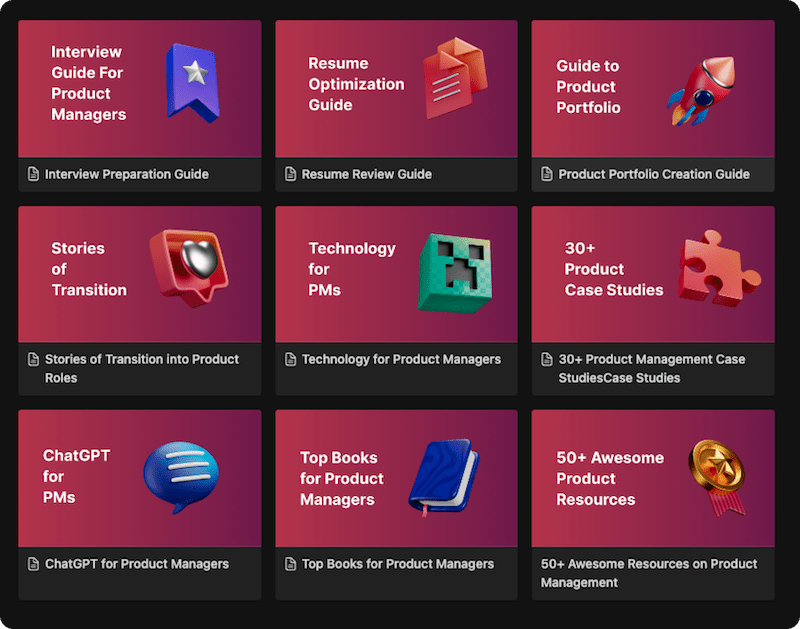Does your product roadmap feel less like a strategic guide and more like a long, unchangeable list of features dictated from on high? As a product manager, you’re expected to be agile and responsive, yet you’re often tied to a plan made months ago, with little room to adapt to new learnings or market shifts. This rigid process, known as the “feature factory,” focuses on shipping outputs rather than achieving outcomes, leading to wasted effort and products that miss the mark. What if there was a better way to plan which is a way that embraces uncertainty and empowers teams to deliver real value?
Enter GIST Planning, a lightweight, agile framework designed specifically to solve this problem. GIST provides a simple yet powerful structure for connecting long-term strategy with day-to-day execution, all while keeping you focused on evidence and outcomes. This guide will take you on a comprehensive journey, transforming you from a GIST novice to a confident practitioner. You will learn not just what GIST is, but how to implement it, avoid common pitfalls, and finally break free from the constraints of traditional roadmapping to build products that truly matter.
The Four Layers of GIST: Deconstructing the Framework
GIST is not just a process; it’s a multi-layered planning system where each layer operates on a different timescale. Think of it like a tree: the Goals are the sturdy trunk, the Ideas are the main branches, the Step-projects are the smaller branches, and the Tasks are the individual leaves.
1. Goals (The “Why”)
Goals are the strategic objectives you want to achieve. They articulate the desired outcome without prescribing a specific solution. They answer the question, “Where do we want to go?”. Goals are typically set quarterly or annually and should follow principles of good goal-setting, like the SMART (Specific, Measurable, Achievable, Relevant, Time-bound) framework.
- Timescale: Annually or quarterly.
- Example: “Increase mobile user engagement by 15% by the end of Q4.”
2. Ideas (The “What”)
Ideas are potential ways you could achieve your Goals. This is where brainstorming and creativity come in. Crucially, in GIST, ideas are treated as hypotheses, not as a committed backlog. You can have dozens of ideas for each goal, which are then collected and prioritized based on evidence and potential impact. Many teams use scoring systems like ICE (Impact, Confidence, Ease) to rank their ideas.
- Timescale: Continuously collected and reviewed.
- Example: For the goal above, ideas could include: “Launch a ‘daily stories’ feature,” “Implement a personalized push notification system,” or “Gamify the user onboarding experience.”
3. Step-projects (The “How”)
This is where GIST truly diverges from traditional roadmaps. Instead of building a whole idea (a “big bet”), you break it down into small, self-contained experiments called Step-projects (or “Steps”). Each Step-project is designed to test the core hypothesis of the idea in under 10 weeks. This is the heart of GIST’s lean, iterative approach. It allows you to gather evidence and decide whether to continue, pivot, or kill an idea without wasting months of development time.
- Timescale: 1-10 weeks per experiment.
- Example: For the “daily stories feature” idea, a Step-project could be: “Build a minimal MVP of the stories feature and release it to 5% of Android users to measure initial engagement.”
4. Tasks (The Day-to-Day Execution)
Tasks are the individual work items required to complete a Step-project. This is the layer that most development teams are already familiar with—the tickets in Jira, Asana, or any other task management system. Because they are tied to a small, well-defined Step-project, every task has a clear line of sight back up to the overarching Goal.
- Timescale: Daily and weekly.
- Example: Tasks for the MVP Step-project could include: “Design the stories UI,” “Develop the backend service for story uploads,” “Set up the A/B test in the analytics tool.”
Benefits & Use-Cases of GIST Planning
Adopting GIST can fundamentally change how a product organization operates. The key benefits include:
- Increased Agility: The framework’s iterative nature allows teams to quickly adapt to new information and changing priorities.
- Reduced Risk: By testing ideas with small Step-projects, you avoid investing heavily in features that might fail.
- Improved Team Autonomy: GIST empowers teams by giving them clear goals and the freedom to discover the best way to achieve them.
- Outcome Over Output: It shifts the focus from shipping features to achieving measurable business outcomes.
- Clear Connection to Strategy: Every task a developer works on can be traced directly back to a strategic goal, boosting morale and purpose.
How to Implement GIST Planning: A Step-by-Step Guide
Let’s walk through implementing GIST with a hypothetical example. Imagine we work for “FitTrack,” a fitness app.
Step 1: Set Your High-Level Goal (G)
The leadership team at FitTrack wants to improve user retention. They set a clear, measurable goal for the next quarter.
- Goal: “Increase 30-day user retention by 20% for new users by the end of Q3.”
Step 2: Brainstorm and Prioritize Ideas (I)
The product team gets together to brainstorm ways to achieve this retention goal. They come up with several ideas and store them in an “Idea Bank” (a simple spreadsheet or a dedicated tool).
- Idea A: “Create personalized workout plans.”
- Idea B: “Launch a social challenges feature where users can compete with friends.”
- Idea C: “Improve the accuracy of our GPS tracking for runners.”
They then score each idea using the ICE framework (on a scale of 1-10):
- Idea B (Social Challenges): Impact=9, Confidence=7, Ease=6. ICE Score = 7.3
- Idea A (Personalized Plans): Impact=8, Confidence=6, Ease=4. ICE Score = 6.0
Based on the score, they decide to explore Idea B: “Social Challenges” first.
Step 3: Define the First Step-project (S)
Instead of building a full-blown social feature, the team breaks it down into a small, testable experiment.
- Step-project: “Build an MVP ‘Weekly Step Challenge’ for two users to compete directly. The winner gets a badge. Launch on iOS only. Duration: 4 weeks.”
- Hypothesis: If we let users challenge their friends, they will be more engaged and more likely to return to the app.
- Success Metric: Achieve a 25% adoption rate among invited users and see a 10% higher 7-day retention for users in the challenge vs. a control group.
Step 4: Break Down the Step-project into Tasks (T)
The Product Manager and the engineering lead work together to create the tasks needed to deliver the Step-project. These go into their project management tool (e.g., Jira).
[FT-101]Design the challenge invitation screen.[FT-102]Build the logic to track and compare steps between two users.[FT-103]Create the winner’s badge asset.[FT-104]Implement the A/B test to measure retention lift.
Step 5: Review and Iterate
After 4 weeks, the team analyzes the results of the Step-project. Did they hit their success metrics?
- If yes: They can proceed to the next Step-project for this idea (e.g., “Expand challenges to groups of up to 10 users”).
- If no: They can pivot (e.g., “Maybe the reward isn’t motivating enough, let’s test a different prize”) or kill the idea and move to the next highest-scoring idea in their bank (Idea A: Personalized Plans).
Common Mistakes to Avoid
- Setting Vague Goals: Goals like “Improve the app” are useless. Goals must be specific and measurable to be effective.
- Making Step-projects Too Big: If your “Step-project” takes 6 months, it’s not a step; it’s a traditional, high-risk project. Keep them under 10 weeks.
- Falling in Love with One Idea: The purpose of the Idea bank is to treat ideas as disposable hypotheses. Don’t get attached. Follow the evidence.
- Skipping the Review Cycle: GIST only works if you consistently review the results of your Step-projects and use that evidence to decide what to do next.
GIST Planning vs. Other Frameworks
GIST vs. Traditional Roadmaps
GIST is a direct response to the failings of traditional roadmaps.
| Aspect | Traditional Roadmap | GIST Planning |
| Focus | Output (Shipping features) | Outcome (Achieving goals) |
| Commitment | High (Commits to features months in advance) | Low (Commits only to the next small step) |
| Flexibility | Low (Hard to change) | High (Designed for change based on evidence) |
| Risk | High (Large, upfront bets) | Low (Small, iterative experiments) |
| Team Role | “Feature Factory” (Executes a plan) | Empowered Team (Discovers solutions) |
GIST vs. OKRs (Objectives and Key Results)
GIST and OKRs are not competitors; they are highly complementary. In fact, they work together perfectly.
- The ‘O’ (Objective) in OKRs is the ‘G’ (Goal) in GIST. OKRs provide a powerful method for setting the strategic goals that sit at the top of the GIST framework.
- The ‘KRs’ (Key Results) are the metrics you use to measure if you’ve achieved your Goal.
- GIST then provides the missing structure—Ideas, Step-projects, and Tasks—that explains how you plan to achieve the Objective defined by your OKRs.
Conclusion
GIST Planning offers a clear escape from the rigid “feature factory” and its outdated roadmaps. By breaking down work into cascading layers of Goals, Ideas, Step-projects, and Tasks, it creates a direct link between high-level strategy and the daily work of your team. This framework fundamentally shifts the conversation from delivering outputs to achieving outcomes, ensuring every effort is focused on learning and creating measurable value.
Getting started is simpler than it looks. Begin by defining one clear Goal and testing your biggest idea with a small, fast Step-project. By embracing this iterative, evidence-based approach, you empower your team to discover what truly works, reduce wasted effort, and consistently build more impactful products.
FAQ’s
No, GIST is highly adaptable. Startups can use it in a very lightweight way to stay lean and test ideas quickly, while large companies can use it to align multiple teams around shared goals and avoid building in silos.
Each layer has its own cadence. Goals are typically reviewed quarterly or annually. Ideas should be collected and reviewed continuously. Step-projects are reviewed upon completion (every 1-10 weeks). Tasks are reviewed daily or weekly in sprint ceremonies.
You can start with simple tools. Use a Google Doc for Goals, a spreadsheet for your Idea bank, and a Trello or Jira board for Step-projects and Tasks. Specialized product management tools like Productboard, Aha!, or Craft.io also offer features to support GIST-like planning.
It replaces the traditional, feature-based, timeline roadmap. You will still have a “roadmap,” but it will look different. It might be a GIST board showing your Goals, the Ideas you are currently testing, and the Step-projects in progress. It’s a more dynamic, outcome-focused view of your direction.
Learn better with active recall quiz
How well do you know What is GIST Planning? Let’s find out with this quick quiz! (just 10 questions)


